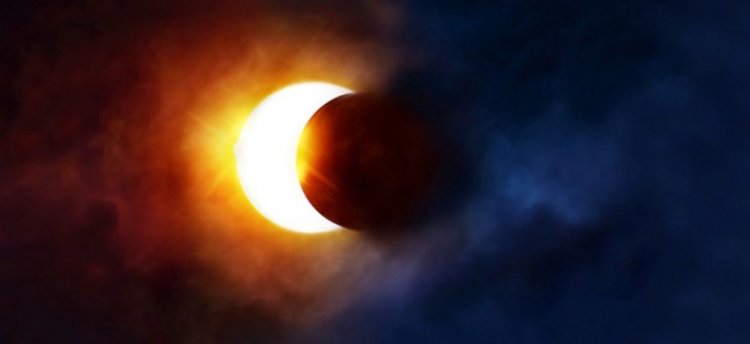The Third Lunar Eclipse of 2020!

The third lunar eclipse is going to happen on July 4. People of some regions will be able to see this Penumbral lunar eclipse. It can also be called the "Buck Moon" lunar eclipse. The first lunar eclipse of 2020 took place in January, followed by the second in June and the third lunar eclipse of the year in July. Unfortunately, people in India will not be able to see this eclipse directly.
In a lunar eclipse, Earth’s shadow falls on the moon. If the moon passes through the dark central shadow of Earth- the umbra, a partial or total lunar eclipse takes place. If the moon only passes through the outer part of the shadow- the penumbra, a subtle penumbral eclipse occurs.
Penumbral Lunar Eclipse:
An eclipse of the moon can only happen at full moon, when the sun, Earth and moon line up in space, with Earth in the middle. At such times, Earth’s shadow falls on the moon, creating a lunar eclipse. Lunar eclipses happen a minimum of two times to a maximum of five times a year. There are three kinds of lunar eclipses: total, partial and penumbral.
In a total eclipse of the moon, the inner part of Earth’s shadow, called the umbra, falls on the moon’s face. At mid-eclipse, the entire moon is in shadow, which may appear blood red.
In a partial lunar eclipse, the umbra takes a bite out of only a fraction of the moon. The dark bite grows larger, and then recedes, never reaching the total phase.
In a penumbral lunar eclipse, only the more diffuse outer shadow of Earth – the penumbra – falls on the moon’s face. This third kind of lunar eclipse is much more subtle, and much more difficult to observe, than either a total or partial eclipse of the moon. There is never a dark bite taken out of the moon, as in a partial eclipse. The eclipse never progresses to reach the dramatic minutes of totality. At best, at mid-eclipse, very observant people will notice dark shading on the moon’s face. Others will look and notice nothing at all.
According to eclipse expert, Fred Espenak, about 35% of all eclipses are penumbral. Another 30% are partial eclipses, where it appears as if a dark bite has been taken out of the moon. And the final 35% go all the way to becoming total eclipses of the moon, a beautiful natural event.
Because the penumbra is slightly darker than the dark core of the Earth's shadow, it is difficult to see this eclipse. This is why Penumbral Lunar Eclipse is sometimes considered a full lunar eclipse by the people.
According to NASA, as there will be a full moon at 12:44 am EDT on July 5 (10:14 am Indian time) and it will be the first full moon of summer (in the US), the Algonquin tribe called this full moon the Buck Moon.
In India, there is a tradition to worship Guru on Aashadh month full moon. On this day, gift your guru according to your ability and seek his blessings. Do special worship to your presiding deity. If you want, you can also such auspicious readings. On this day, donate money and food grains to the needy people. There is a tradition of telling the story of Lord Satyanarayana on the full moon.
Birth anniversary of Maharishi Ved Vyas
Maharishi Veda Vyas was born on the full moon of Ashadha month in ancient times. Ved Vyas blessed Gandhari to have a hundred sons. After this Poornima, the month of Shivaji's beloved Sawan will begin from July 6.
According to Time and Date data, the lunar eclipse will begin on July 4 at 11:07 pm EDT (Indian time on July 5 at 8:37 am) and July 5 at 12:29 pm EDT (Indian time (July 5 at 9 am: 59 hrs) will reach its peak. It will last for 2 hours 45 minutes after which the lunar eclipse will end on July 5 at 1:52 pm EDT (July 5 at 11:22 pm Indian time).
According to religious beliefs, the moon or sun is afflicted at the time of the eclipse, so religious and manglik actions are forbidden. At the time of eclipse one should chant Lord Vasudev or Shri Krishna mantra. On this day, you should chant-
“Om Namo Bhagavate Vasudevaya” or “Shrikrishnayya Srivasudevaya Hareye Parmatmne”, systematically “Kleshnasayya Govindaye Namo Namah Mantra”.
To witness such events, Penumbral lunar eclipses and other such astronomical events are often streamed on popular YouTube channels, including the ‘Slooh’ and ‘Virtual Telescope’ websites. If you live in one of the areas where this lunar eclipse will be visible, you will be able to see it without any special equipment. People from other countries will be able to watch it from home via YouTube channels.















































